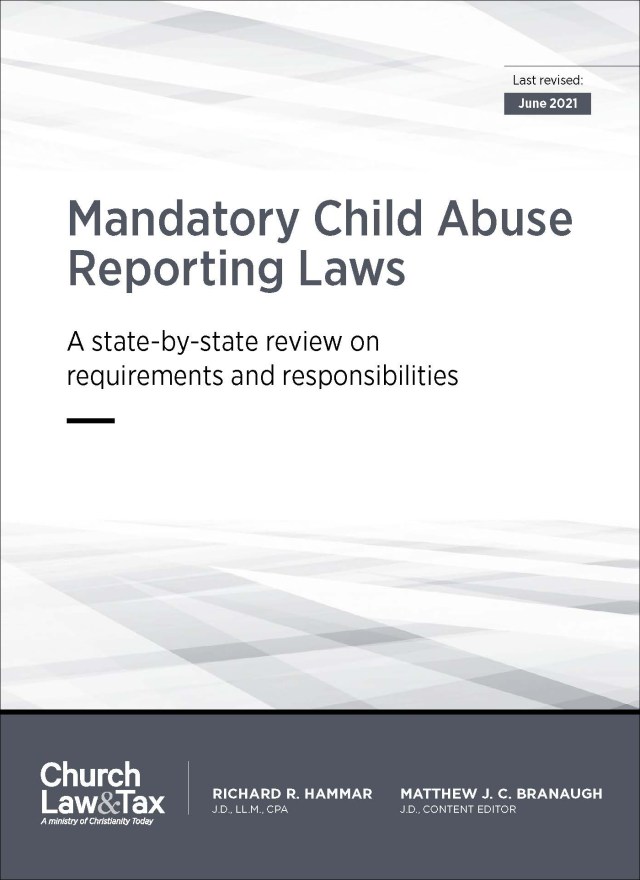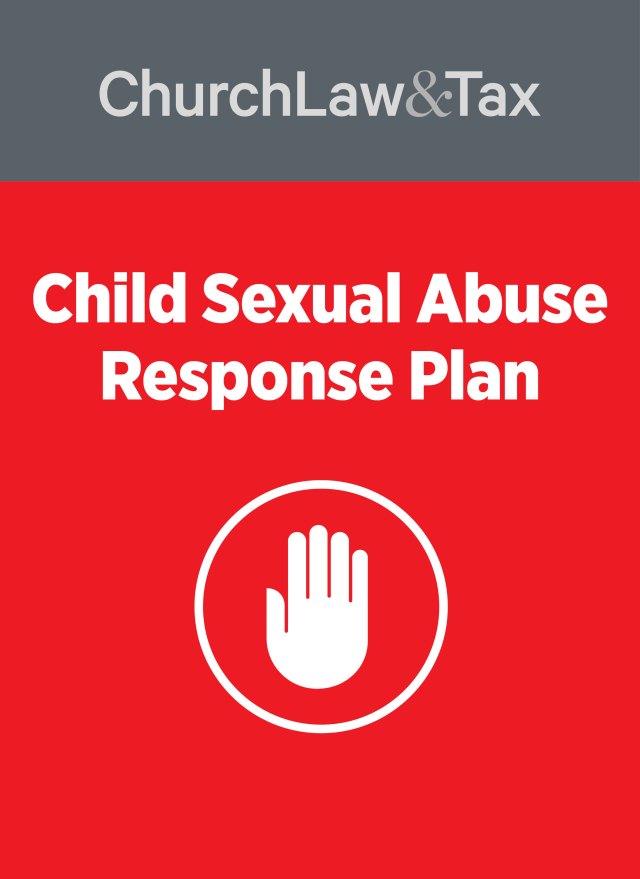• Key point 10-13.2. Several courts have refused to hold churches and denominational agencies liable on the basis of a breach of a fiduciary duty for the sexual misconduct of a minister. In some cases, this result is based on first amendment considerations.
The Maine Supreme Court ruled that a church was not responsible for a member’s molestation of a minor off of church premises. A church member molested a child in the church. When church elders became aware of this incident, they “privately rebuked” the molester and temporarily forbade him from having any contact with minors in the church. The board of elders did not alert church members to the molester’s misdeeds. Eventually, the molester was allowed to resume activities as an ordinary member of the church. He later molested a teen-age boy who was his next-door neighbor and also was a member of the church. All of the acts of molestation occurred in the molester’s home. While the victim’s father was aware of the molester’s history, he nevertheless allowed his son to spend time alone with the molester in his home. As a result of repeated sexual abuse, the victim suffered significant emotional harm necessitating psychiatric hospitalization. The victim later sued the church, alleging that it breached a “fiduciary duty” owed to him as a member of the congregation. He also claimed that the church was guilty of intentionally causing him emotional distress. A trial court dismissed the case, and the victim appealed. The appeals court began its opinion by observing those claims that the victim did not assert:
He does not allege that [the molester] was an agent or employee of the church. Nor does he claim that [the molester] occupied any clerical position such as priest, minister, or pastor. Moreover, the complaint does not allege that the church affirmatively placed [the molester] in a position of control and supervision of children, such as a Sunday school teacher or youth coordinator, or that the church knowingly placed [the molester] in a position where he could sexually abuse children within a church setting. Rather, [the victim alleged that the molester] was able to earn [the victim’s] trust and confidence because of his position of power and authority in the church.
Instead, the victim claimed that the church, because of an alleged “special relationship” with its members, has a duty to protect its members from each other, at least when the church and its agents are aware of a potential danger posed by a member. Because the church elders knew of the molester’s propensity to abuse children, they had a duty to protect him from harm.
The court stressed that “the mere fact that one individual knows that a third party is or could be dangerous to others does not make that individual responsible for controlling the third party or protecting others from the danger.” However, in recent years some courts “have come to recognize a duty on the part of certain groups to protect others from harm caused by third parties.” For example, a “fiduciary relationship” may impose a duty to protect another from a third party’s acts. As a result, in order for the church to have had a duty to protect the victim from the molester’s acts, a “fiduciary relationship” must have existed between the church and the victim. The victim insisted that such a relationship arose because of the “substantial trust and confidence” he placed in the church, and claimed that this relationship imposed upon the church a fiduciary duty to warn him about the molester’s dangerous propensities or to control the molester’s actions. The court noted,
Thus, we are presented with two questions: first, whether we would recognize a cause of action against a voluntary social or religious organization for breach of a fiduciary duty to protect the organization’s members from each other. Put another way, we must determine whether a voluntary organization such as a church has a special relationship with its members that gives rise to a duty to protect those members from a class of third parties-other members of the organization. Second, we are asked to determine whether such a cause of action could be maintained against a church in light of the free exercise protections contained in the first amendment.
The court concluded that the victim failed to prove a special or fiduciary relationship between himself and the church, and it refused to recognize a duty on the part of an organization such as a church to protect its members from each other.
Fiduciary Duty
The court noted that the victim provided no support for his claim that a religious organization has a fiduciary relationship with its members that requires it to protect those members from other members of the church who may present a danger. The court conceded that “it is often difficult to articulate exactly what proof is required to establish the existence of a fiduciary relationship in particular circumstances.” It listed the following two elements of a fiduciary relationship: (1) “the actual placing of trust and confidence in fact by one party in another,” and (2) “a great disparity of position and influence between the parties.” However, it cautioned that a “general allegation of a confidential relationship is not a sufficient basis for establishing the existence of one,” and that a fiduciary relationship “does not arise merely because of the existence of kinship, friendship, business relationships, or organizational relationships. A fiduciary duty will be found to exist only in circumstances where the law will recognize both the disparate positions of the parties and a reasonable basis for the placement of trust and confidence in the superior party in the context of specific events at issue.” Relationships “will not give rise to a confidential relation … unless there is evidence of superior intellect or will on the part of the one or the other, or of trust reposed or confidence abused.”
The court concluded that the victim’s allegation that he placed “substantial trust and confidence” in the elders of the church and trusted them “to protect him and guide him” was not sufficient proof of any special responsibility on the part of the church. Such “vague and nonspecific allegations are wholly insufficient to make out a claim of a special relationship between the organization and its members.” Further, the creation of “an amorphous common law duty on the part of a church or other voluntary organization requiring it to protect its members from each other would give rise to both unlimited liability and liability out of all proportion to culpability.”
Emotional Distress
To prove that the church was guilty of intentional infliction of emotional distress, the victim “would be required to demonstrate that the church’s conduct was so extreme and outrageous as to exceed all possible bounds of decency and must be regarded as atrocious [and] utterly intolerable in a civilized community.” In addition, he would be required to demonstrate that the church, through this specific conduct, intentionally or recklessly inflicted emotional distress. In support of his claim, the victim alleged that (1) the church knew of the molester’s propensity to harm children; (2) it failed to announce the molester’s misdeeds to the congregation; and (3) its plan to address the molester’s transgressions was “woefully inadequate” to protect against future harm to minors. The victim insisted that the church’s failure to excommunicate the molester and its eventual decision to allow him to resume a position of leadership and respect within the church constituted acts that were sufficiently extreme and outrageous that they exceeded all possible bounds of decency. The court disagreed:
We do not lightly dismiss the harm caused by the sexual abuse of children, nor do we misapprehend the enormity of that harm if inflicted in the context of religious activities. On these facts, however, we conclude that the effort to hold the church responsible, in addition to the wrongdoer himself, would require direct inquiry into the religious sanctions, discipline, and terms of redemption or forgiveness that were available within the church in the context of this claim, an inquiry that would require secular investigation of matters that are almost entirely ecclesiastical in nature. State courts may not interfere in matters concerning religious doctrine or organization. A religious organization’s decisions and actions when providing advice, counsel, or religious discipline to its members will be based on the particular religious beliefs of the organization, and thus, like the decisions and actions with respect to the organization’s government, cannot by themselves form the basis for secular liability.
Allowing a secular court or jury to determine whether a church and its clergy have sufficiently disciplined, sanctioned, or counseled a church member would insert the state into church matters in a fashion wholly forbidden by the free exercise [of religion] clause of the first amendment.
Application. This case is important because the court refused to find a church liable for a member’s molestation of a child in the member’s home, despite the fact that the church’s governing board was aware that the molester had previously molested another child. The court concluded that the church had no duty to protect other members of the congregation, despite its knowledge of the previous incident of molestation, because no “special” or fiduciary relationship was proven between the victim and the church. This case will be a useful precedent in any case alleging that a church is legally responsible for acts of child molestation occurring off of church property.
It is also worth noting that the church board “privately rebuked” the molester when it learned of the previous incident of molestation, temporarily forbade him from having any contact with minors in the church, did not alert church members to the molester’s misdeeds, and eventually allowed the molester to resume normal activities in the church. It is entirely possible that the court would have found the church liable had the acts of molestation occurred on church property or in the course of a church activity, since these responses might have been viewed as insufficient to protect church members on church property. Bryan R. v. Watchtower Bible and Tract Society of New York, 738 A.2d 839 (Me. 1999).
Copyright 2000 by Church Law & Tax Report. All rights reserved. This publication is designed to provide accurate and authoritative information in regard to the subject matter covered. It is provided with the understanding that the publisher is not engaged in rendering legal, accounting, or other professional service. If legal advice or other expert assistance is required, the services of a competent professional person should be sought. Church Law & Tax Report, PO Box 1098, Matthews, NC 28106. Reference Code: m67 m86 c0600


